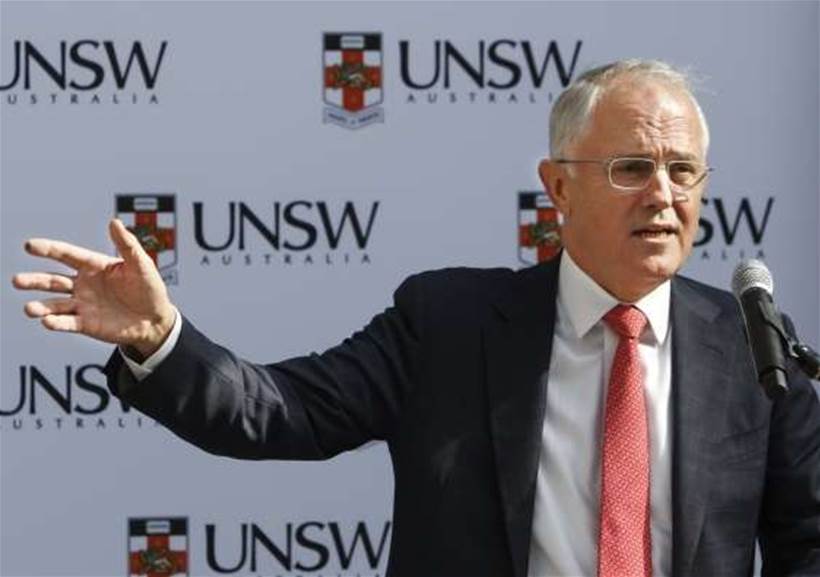UNSW has opened new quantum computing labs at its Kensington campus in the same week that quantum researchers at the University of Sydney opened a new facility and revealed a collaboration with Microsoft.
The launch of UNSW’s new CQC2T labs was jointly officiated by Prime Minister Malcolm Turnbull, and the Minister for Industry, Innovation and Science, Christopher Pyne.
The Government is a financial supporter of UNSW research to develop a quantum computer in silicon, committing $26 million late last year under its $1.1 billion National Innovation and Science Agenda (NISA).
That commitment saw private sector investment follow, with Telstra and CBA tipping in a further $20 million.
UNSW’s new labs will house six scanning tunnelling microscopes, which can be used to manipulate individual atoms, as well as six cryogenic dilution refrigerators that can reach ultra-low temperatures close to absolute zero.
This will double the productive capacity of the UNSW headquarters of the CQC2T, providing essential capacity for researchers “to capitalise on the commercial implications of their work”, the university said.
At a launch event, Turnbull said there is “no bolder idea than quantum computing”, and he praised the lead role UNSW researchers were playing in “the international race to build the world’s first quantum computer in silicon.”
“The international race to build a super-powerful quantum computer has been described as the space race of the computing era,” centre director UNSW Scientia Professor Michelle Simmons said.
“Our Australian centre’s unique approach using silicon has given us a two to three-year lead over the rest of the world. These facilities will enable us to stay ahead of the competition.”
Across town, the University of Sydney officially opened its $150 million Sydney Nanoscience Hub, which was co-funded with $40 million from the federal government.
Attending the launch there were two Microsoft researchers who have been undertaking “theoretical quantum research” through the University of California, “with an eye towards one day building a scalable universal quantum computer”.
“A select and very small collection of labs worldwide are collaborating with Microsoft on quantum computing by doing revolutionary engineering and physics, including the Quantum Nanoscience Laboratory at the University of Sydney headed by Professor David Reilly– whose group is world-leading in understanding the interface between quantum physics and the grand engineering challenges of building reliable quantum machines,” the University of Sydney said.
Professor Reilly said his focus in the next few years would be to scale up, constructing specialised electronic systems that operate both at room and cryogenic temperatures and go well beyond the specifications of off-the-shelf technology.
“Building a quantum computer is a daunting challenge; it’s something that will only be realised in partnership with the world’s biggest technology companies and we’ve been fortunate to partner with Microsoft,” he said.
“To build a quantum computer you need more than just the [quantum] qubits; more than just the elementary constituents of matter – the electrons and so on.
“You also need a range of electronics and classical control technology that is pushing the limit of what’s available today.
“So we’ve been focusing on both aspects in parallel and our plan is over the next few years to see these classical and quantum streams meet up in order to be able to build quantum machines.”









